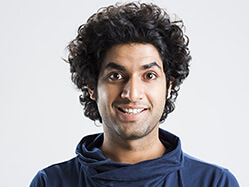Fixed Deposit or Recurring Deposits
Fixed Deposits (FDs) offer safe, stable returns. Many banks offer special children's FD plans, which usually comes without the premature withdrawal option. Recurring Deposits (RDs) provide a monthly savings plan for education, with regular small investments at a fixed interest rate, though returns may be slightly lower than FDs. Both are options for long-term savings. [1]
Sukanya Samriddhi Yojana (SSY)
The Sukanya Samriddhi Yojana (SSY) is a Government of India and one of the best savings schemes for the financial future of girl children. It can be opened before the child turns 10 and runs for 21 years or until marriage. Parents can open an account at any post office or authorized bank. The interest rate is declared quarterly by the government , and the accumulated amount can be used for the child’s education or marriage.[1]
Gold
Gold is a valuable asset that protects against inflation due to its non- depreciating nature . Besides physical gold, digital options like Gold ETFs, Sovereign Gold Bonds (SGBs), and gold mutual funds are available. You can invest in gold for your child’s future through these options, providing a stable and inflation-resistant asset. Digital gold is safer, eliminating storage costs and wastage charges, and is more flexible, allowing easy selling of units on the stock exchange. [1]
PPF
The Public Provident Fund (PPF) is a government-backed savings scheme with a 15-year maturity period. It offers higher interest rates than fixed deposits and provides tax-free returns under the Exempt-Exempt-Exempt (EEE) model, meaning the principal, interest, and maturity amount are all tax-free. The scheme has a lock-in period, making it ideal for long-term savings, especially for securing a child’s future. The government reviews the interest rate every quarter, providing a stable investment option. [1]
Life Insurance
There are life insurance policies designed specifically for children. These policies typically provide life cover and death benefits. The policyholder pays regular premiums, and the invested amount grows over time. Upon maturity, a lump sum is paid out, which can be used for significant expenses like education or marriage.
These life insurance policies also offer tax benefits. Premiums paid can be claimed as deductions under various sections of the Income Tax Act, of 1961. Additionally, the benefits received – including death benefits and the maturity amount – are tax-free up to certain limits.[1]
Unit Linked Insurance Plans (ULIP)
Unit-Linked Insurance Plans (ULIPs) are type of life insurance plan and are a combination of market-linked investment and life insurance. They provide both market-linked returns and life cover, giving you a dual advantage. As an investor, you can choose how your funds are distributed across various asset classes. ULIPs come with a five-year lock-in period, making them a good option for long-term savings for your child’s education or future financial goals.[2] It is important to note that investments in ULIPs are market-linked and market volatility can affect your investments.
Systematic Investment Plan (SIP)
Systematic Investment Plans (SIPs) are a smart way to invest in mutual funds. Parents can invest small amounts regularly in equity or debt mutual funds, making them flexible and affordable. SIPs in equity funds for long-term goals like higher education can grow your money. The benefits of compounding and rupee cost averaging make SIPs a popular choice for securing a child’s future. [2]
Mutual Funds
Mutual funds pool money from several investors to invest in a mix of stocks, bonds, and other securities. Equity mutual funds are for long-term goals like education, offering returns but with more risk. Debt mutual funds are safer, providing steady returns with lower risk. Parents can choose mutual funds based on their financial goals and risk preferences.[2]
Conclusion
Investing in your child’s future is a crucial step in securing their education and financial well-being. By exploring options like Life insurance, PPF, Sukanya Samriddhi Yojana, SIPs, and mutual funds, parents can make informed decisions that help build a strong financial foundation for their children.
FAQs
What is the best investment plan for children in India?
Popular options include life insurance, PPF, Sukanya Samriddhi Yojana, SIPs, and mutual funds.
What is an SIP (Systematic Investment Plan)?
A SIP allows you to invest a fixed amount regularly in mutual funds, offering the benefits of compounding and rupee cost averaging.
What are the benefits of investing in Gold for children?
Gold is a good hedge against inflation and can be invested digitally through Gold ETFs, SGBs, and gold mutual funds. [1]
What is the lock-in period for PPF?
PPF has a lock-in period of 15 years. [1]
Are children's life insurance policies a good option?
Yes, they provide life cover and lump-sum payouts for education or marriage and offer tax benefits. [2]
How do Unit Linked Insurance Plans (ULIPs) work?
ULIPs combine life insurance and investment , offering market-linked returns with a five-year lock-in period. [2]
Are mutual funds a safe investment for children?
Mutual funds can be safe (debt funds) or risky (equity funds), depending on the type of fund chosen.
Can I claim tax deductions for investments in child insurance plans?
Yes, many child insurance plans like child based ULIPs offer tax deductions under the Income Tax Act.





























 An ISO 9001:2015
An ISO 9001:2015 

